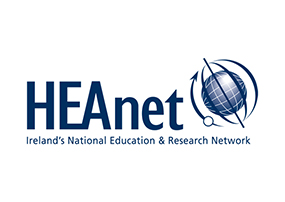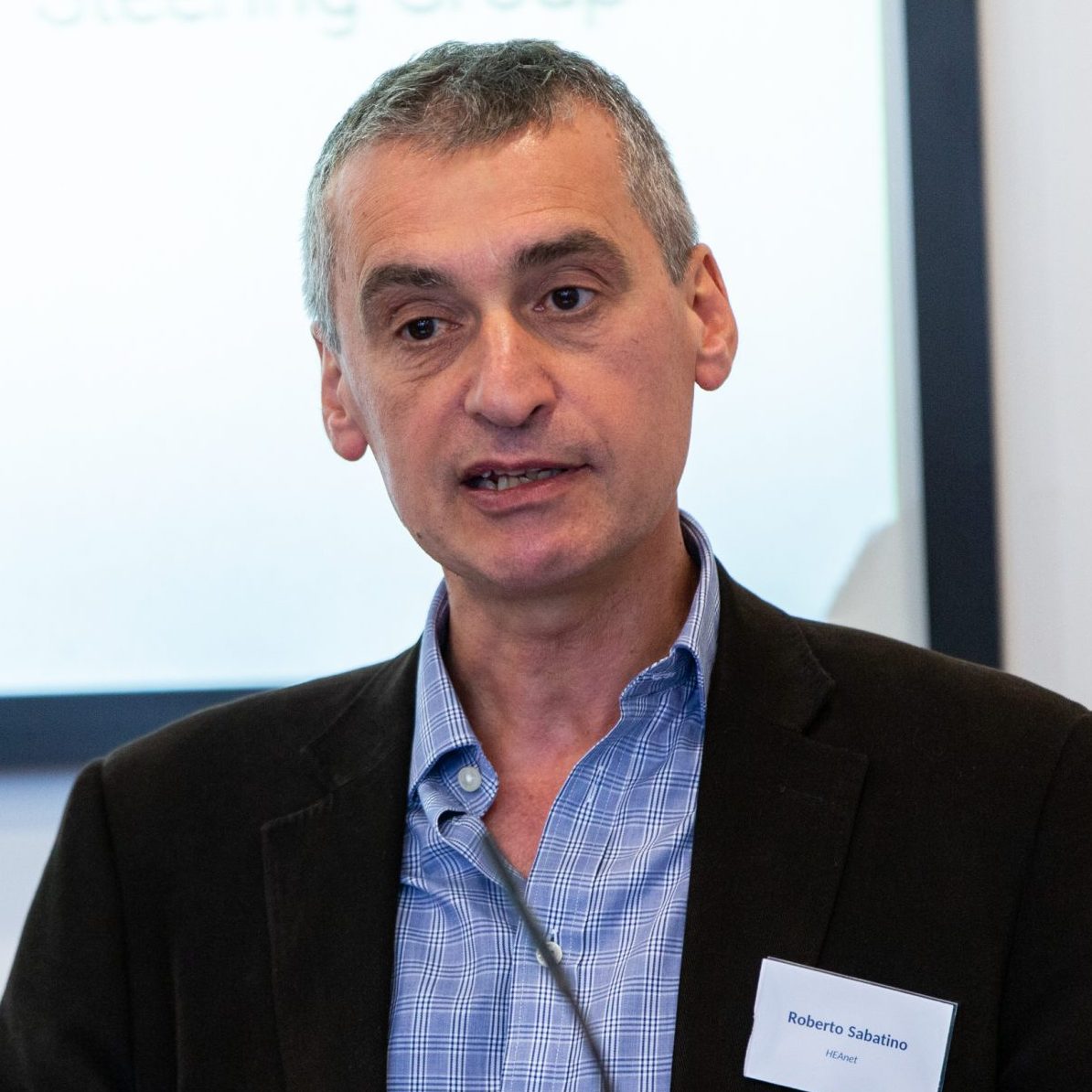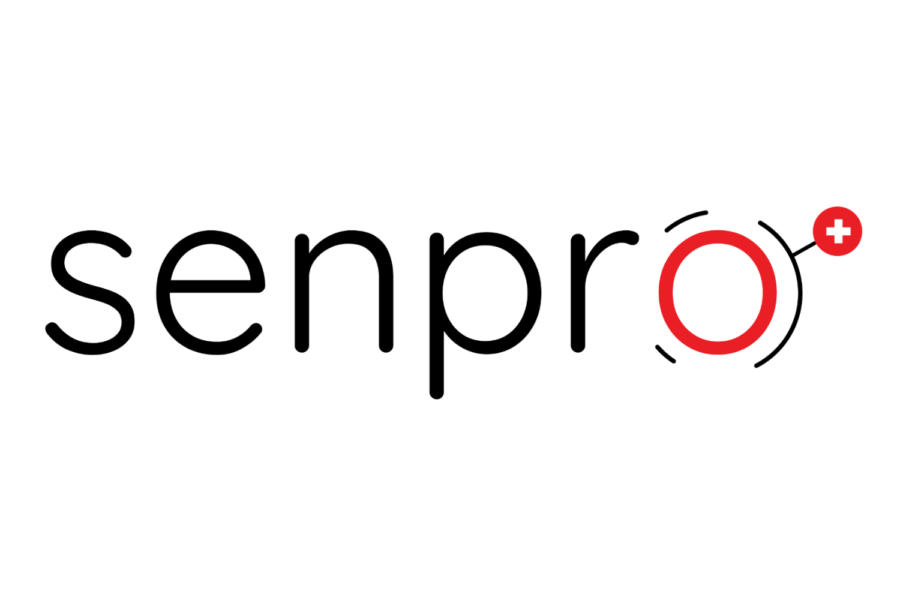This interview is part of a series coordinated by the EOSC Focus project. The interviews aim to highlight the role of the EOSC Association’s Mandated Organisations. By bringing their activities and insights to the forefront, the EOSC Focus interviews will help to reinforce the connections between each country’s Mandated Organisation and its EOSC Association member and observer organisations, as well as to make visible the work going into the implementation of EOSC at the national and institutional levels.
Roberto Sabatino spoke with EOSC Focus about the Irish National and Educational Research Network, HEAnet’s, efforts to build the EOSC ‘people ecosystem’ and infrastructure in Ireland. As the only EOSC-A member organisation in the country, HEAnet has an atypical role relative to its appointment as an EOSC-A Mandated Organisation. Sabatino joined HEAnet in 2020 as Research Engagement Officer and in this role represents HEAnet in EOSC-A. He is also the Irish delegate to the EOSC Steering Board.
What is the role of HEAnet in the EOSC Association, and how does it align with the overall development of the EOSC ecosystem?
HEAnet serves as the sole representative of Ireland in EOSC-A, thereby being mandated by our ministry department, which also funds our membership. Because we are the only Irish EOSC-A member, we don’t have the typical role of the mandated organisations, but we actively engage with stakeholders in Ireland even if they are not members of EOSC-A. There are several stakeholders in Ireland who are interested in this work in Open Science through NORF, the National Open Research Forum. NORF covers the whole spectrum of open research, not just infrastructures, which is the main focus for EOSC. Additionally, we have set up EOSC-Ireland as a forum involving NORF members interested in EOSC-related activities, focusing on topics like long-term data preservation, FAIR data quality and sustainability.
In terms of alignment with EOSC and fostering ecosystem development, HEAnet’s mission closely intersects with EOSC, primarily through providing EOSC-supporting infrastructures. In Ireland, HEAnet operates both the network connecting all the universities and research centres, and Edugate, providing user authentication services to access services hosted by institutes and other service providers.
Our main motivation for being a member of the EOSC Association is to ensure that we are in tune and don’t get any surprises down the road.
In terms of what support to EOSC is needed from an Irish perspective, I think we’re very well placed. We know what’s going on. We know what’s coming and we know what we need to do as an organization.
If we look in terms of how strategy and organization goals reflect EOSC, you could say we are a service provider to the research community in Ireland, and we need to continue to provide services to our research community which are relevant to EOSC and thus to our users. In conclusion we could state that there is a very good mapping between our mission in Ireland and the goals of EOSC.
Regarding community building, we’re getting there. NORF already has lots of stakeholders. But NORF is broader than EOSC. It covers everything in relation to Open Science. In terms of an EOSC ecosystem and in terms of infrastructure, that is a work in progress.
Our collaboration extends to ICHEC (Irish Centre for High-End Computing)—which is our high-performance computing (HPC) centre for Ireland—as well as to thematic research communities such as geosciences. Efforts are directed towards fostering community engagement while simultaneously shaping the blueprint for EOSC’s national infrastructure in Ireland. That is a discussion which has started and we are hoping to get to a conclusion this year, which will also define then how the national initiatives in Ireland connect to the EOSC EU node.
How are European developments translated into national initiatives, and what are the main policies driving Open Science and EOSC in Ireland?
European developments are translated into national initiatives through workshops and consultations with stakeholders.
Our plan is to present, in March, our views to our ministry. The ministry will help us bring in other stakeholders with whom we are not yet engaged so that we can share our views with them and try to get them on board to help build this national ecosystem for EOSC. 2024 is about building the people ecosystem. In 2025 the objective will be to develop the infrastructural aspects, which will then lead to national infrastructures connecting to the EOSC EU node.
The Irish National Tripartite Events in 2022 and 2023 have been useful because people are staying tuned in. And the goal with the EOSC-Ireland forum, mentioned previously, is to transform it, with the ministry’s help, from an informal national forum to a more formal coordination mechanism.
Open Science is a national priority for Ireland, as highlighted by NORF’s National Action Plan (NAP). It targets achieving 100% open access by 2030 and encourages the connection of national services through EOSC, although this is not compulsory.
What resources and funding sources are available, and needed, to develop EOSC in your country? What is the level of commitments through financial and in-kind contributions?
Funding goes primarily through NORF. They have invested about 2 million euros per year in the last two years. There is also funding for a series of projects for a total amount of nearly an additional 2 million euros. There were six projects funded in 2022, four in 2023, and nine smaller projects. Those projects cover the whole spectrum of Open Science, also for example on research culture and research careers. For 2025 and other years to come, it is not quite clear how much funding there will be.
What is your opinion about the development of EOSC in Ireland? What are the strengths and challenges at the national level?
NORF is a strength. It has led to all these projects which have been funded. If you only look at the infrastructure spectrum—because I still equate EOSC to primarily infrastructure to support Open Science—there could be more of that going on. I think the main emphasis for Open Science in Ireland is on careers, culture, policies, skills, and less so for the moment on developing digital infrastructures,
A strength for the future creation of thematic nodes is that a lot of research in Ireland is funded through the Science Foundation Ireland (SFI). This is all thematic research: geosciences, photonics and life sciences. The data resulting from this research, in my mind, will naturally form a thematic node in Ireland.
This automatically induces a challenge as well because these centres are 50% funded by commercial partners. So SFI centres receive millions of euros for the lifetime of the centre from the government, but they have to match that from commercial providers. The biggest challenge will be balancing out the interests of the commercial sector with those of Open Science. In at least one case, that’s what has slowed down the engagement from one of the SFI centres.
Are there key areas for improvement if we talk about the development of EOSC in Ireland?
I think we need to improve on the coordination of the community specifically for EOSC.
A second area of improvement is funding, of course. I’m expecting that through the coordination to bring the community together, a collective funding request to support EOSC development will come. We hope this request will then be served by the end of 2024, or in 2025.
What are the main challenges, obstacles or barriers in regard to EOSC’s development?
I think the added value of EOSC infrastructure can do with more selling, because we already have a lot of the ingredients that are needed to make sure that a web of FAIR data can work. We have the network, we have the AAI [Authentication and Authorization Infrastructure], we have repositories, which are connected to the network, and you can use your credentials to access those repositories. But then we see the EOSC EU node emerging, which looks like this huge new thing.
People need to know why those things are needed. They ask themselves: why can’t we just use what we already have in place, leveraging the service that we already have? Why do we have to develop more things? To get going, do we really need those things to start with?
So, the main challenge is communication, the selling of the added value of all this infrastructure for EOSC. If there was clearer communication about why we can’t run with what we already have, that can resonate better with our stakeholders and make engagement easier.
Another challenge is of course the financial one. Who pays for access to the services, especially if we talk transnational? The web of FAIR data is international. So, what’s in it for a centre in Ireland to make their data available or their services available to people from other countries? How is that going to be paid for? Is it reciprocal—I’ll give you mine if you give me yours? Or is there some cost recovery function? That’s not covered by EOSC for now. It’s understandable and a natural question to ask: I’m putting my resources there, so what’s in it for me? Why should I put it there? That needs to be clarified.
A huge obstacle to EOSC’s development is the ideology of the researchers. Unless we have a good plan for reforming research assessment, researchers aren’t going to be interested in Open Science.
The new generation might be, but the established ones, what’s in it for them? Their career is based on how many publications they make and how many peer-reviewed papers they have in publications.
Do you have specific examples of EOSC’s impact?
If we look at the EOSC-A Additional Activities Plan (AAP), we have HEAnet in-kind contributions. We are leading the project to develop a shared storage service for active research data, and that’s going to complete this year. This project is going to result in the definition of a production service. We are also supporting EuroHPC, outside the JU [EU Joint Undertaking], providing networking support. But there are other Irish stakeholders participating in CoARA, EuroHPC, CESSDA, DARIAH…so in a lot of European research infrastructures.
| About HEAnet HEAnet is Ireland’s National Education and Research Network, providing Internet connectivity and associated ICT shared services across all levels of the Irish education and research system. Read more about HEAnet |  |
| About Roberto Sabatino Roberto Sabatino joined HEAnet in 2020 as Research Engagement Officer and in this role represents HEAnet in EOSC-A. He is also the Irish delegate to the EOSC Steering Board. Prior to joining HEAnet, Sabatino worked for many years in a variety of roles at GÉANT, primarily on developing GÉANT’s network capabilities and managing international collaborations. He holds a degree in Computer Science from the University of Turin. |  |





